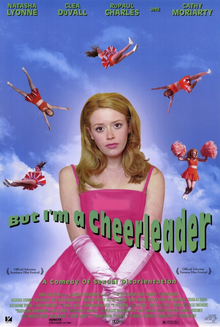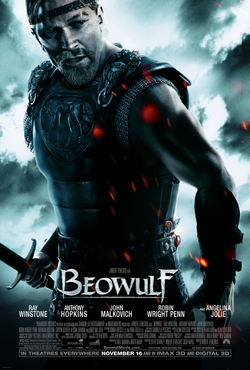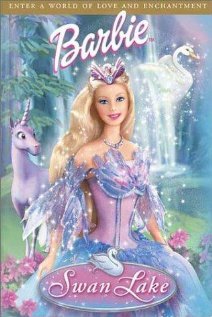
Godzilla is a fictional monster, or kaiju, that debuted in the eponymous 1954 film, directed and co-written by Ishirō Honda. The character has since become an international pop culture icon, appearing in various media: 33 Japanese films produced by Toho Co., Ltd., five American films, and numerous video games, novels, comic books, and television shows. Godzilla has been dubbed the King of the Monsters, an epithet first used in Godzilla, King of the Monsters! (1956), the American localization of the 1954 film.

Roberta Lynn Williams is an American video game designer and writer, who co-founded Sierra On-Line with her husband, game developer Ken Williams. In 1980, her first game, Mystery House, became a modest commercial success; it is credited as the first graphic adventure game. She is also known for creating and maintaining the King's Quest series, as well as designing the full motion video game Phantasmagoria in 1995.
Visual effects is the process by which imagery is created or manipulated outside the context of a live-action shot in filmmaking and video production. The integration of live-action footage and other live-action footage or CGI elements to create realistic imagery is called VFX.

Motion capture is the process of recording the movement of objects or people. It is used in military, entertainment, sports, medical applications, and for validation of computer vision and robots. In films, television shows and video games, motion capture refers to recording actions of human actors and using that information to animate digital character models in 2D or 3D computer animation. When it includes face and fingers or captures subtle expressions, it is often referred to as performance capture. In many fields, motion capture is sometimes called motion tracking, but in filmmaking and games, motion tracking usually refers more to match moving.
Steven Bradford Culp is an American actor. Culp appeared in films Jason Goes to Hell: The Final Friday (1993), James and the Giant Peach (1996), The Emperor's Club (2002), and most notably in the 2000 political thriller Thirteen Days playing Robert F. Kennedy.

But I'm a Cheerleader is a 1999 American satirical teen romantic comedy film directed by Jamie Babbit in her feature directorial debut and written by Brian Wayne Peterson. Natasha Lyonne stars as Megan Bloomfield, a high school cheerleader whose parents send her to a residential in-patient conversion therapy camp to "cure" her lesbianism. At camp, Megan realizes that she is indeed a lesbian and, despite the "therapy", comes to embrace her sexuality. The supporting cast includes Clea DuVall, RuPaul, and Cathy Moriarty.

Geri's Game is a 1997 American animated short film produced by Pixar and written and directed by Jan Pinkava. The film was Pixar's first film to feature a human as its main character; Geri later made a appearance in Toy Story 2 as "Toymaker The Cleaner. Where he was voiced by Jonathan Harris and Bob Peterson.
An interactive film is a video game or other interactive media that has characteristics of a cinematic film. In the video game industry, the term refers to a movie game, a video game that presents its gameplay in a cinematic, scripted manner, often through the use of full-motion video of either animated or live-action footage.

Jayce and the Wheeled Warriors is an animated show which was first broadcast on TF1 on September 9, 1985, on the block Salut les p'tits loups !, and eventually on September 16 in the United States in syndication. It was produced by DIC Audiovisuel and animated by the Japanese animation studios Sunrise, Shaft, Studio Giants, Studio Look and Swan Production. The show, which ran for 65 thirty-minute episodes, was created to support Mattel's Wheeled Warriors toyline. The show had an ongoing plot which was left unresolved, with no series finale.

Beowulf is a 2007 American animated fantasy action film produced and directed by Robert Zemeckis, written by Neil Gaiman and Roger Avary, based on the Old English epic poem Beowulf, and featuring the voices of Ray Winstone, Anthony Hopkins, Robin Wright, Brendan Gleeson, John Malkovich, Crispin Glover, Alison Lohman, and Angelina Jolie. The film depicts the rise and fall of the warrior Beowulf after he travels to Denmark to kill a monster. It was produced by Shangri-La Entertainment and Zemeckis's ImageMovers and features characters animated using motion-capture animation, which was previously used in The Polar Express (2004) and Monster House (2006).

Leisure Suit Larry 6: Shape Up or Slip Out! is the fifth entry in the Leisure Suit Larry series of graphical adventure games published by Sierra On-Line and is a sequel to the 1991 video game, Leisure Suit Larry 5: Passionate Patti Does a Little Undercover Work. Originally developed for MS-DOS in 1993, an enhanced CD-ROM version was published a year later.
Digital puppetry is the manipulation and performance of digitally animated 2D or 3D figures and objects in a virtual environment that are rendered in real-time by computers. It is most commonly used in filmmaking and television production but has also been used in interactive theme park attractions and live theatre.

Monster Max is a 1994 action-adventure puzzle video game developed by Rare and published by Titus France in Europe for the Game Boy. The player is the titular aspiring rock star, who, in an attempt to fight King Krond who bans all music, traverses nine floors of the Mega Hero Academy. Floors consist of diversely-designed rooms of puzzles to solve, the player having to figure out the order of actions to take.

Barbie of Swan Lake is a 2003 animated fantasy film co-produced by Mainframe Entertainment and Mattel Entertainment, and distributed by Artisan Home Entertainment.

Man-Thing is a 2005 monster film based on the Marvel Comics superhero of the same name. Directed by Brett Leonard and written by Hans Rodionoff, it stars Matthew Le Nevez, Rachael Taylor, and Jack Thompson, with Conan Stevens portraying the title character. The film follows a Louisiana sheriff as he investigates a series of deaths in a swamp, leading to him encountering the eponymous creature.

Sleeping Beauties is a 1999 short comedy film directed by Jamie Babbit. It premiered at the 1998 Sundance Film Festival. It stars Sarah Lassez as a morgue beautician trying to get over her ex-girlfriend, played by Radha Mitchell. Babbit made the film with help from David Fincher and Michael Douglas. It played at several film festivals during 1998 and 1999, and was later distributed on a DVD collection of short films by production company POWER UP. Babbit won a Channel 4 award for the film.

The Kung-Fu Master Jackie Chan is a 1995 fighting arcade game developed and published by Kaneko. It features the Hong Kong celebrity, Jackie Chan, who was also the producer of it, while it also features other actors from some of his films.
The Pixar Photoscience Division, a division of Pixar Animation Studios, was founded in 1979 at Lucasfilm for the express purpose of designing and building a laser recorder/scanner system to input and output film to a computer for compositing and color correction of special effects. In the early years of Pixar's history, the team was responsible for the design of color monitoring instrumentation to control the color gamut and gamma of the digital images onto 35mm film using a more advance laser recorder system called PixarVision. In later years at Pixar, the team was responsible for transforming the artists computer-animated images onto film master negatives. Today the team manages all digital content to a variety of delivery media, film, DVD, and digital cinema projection. The team has won Engineering and Technical Academy Awards and patents for their work in Motion Picture Sciences.













